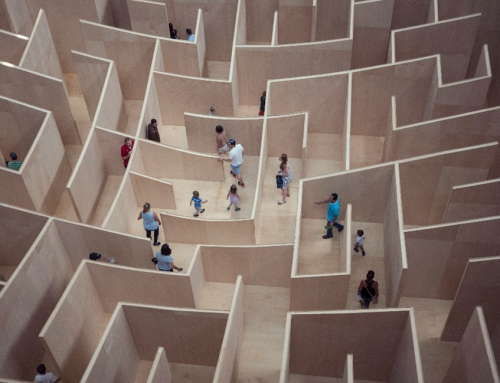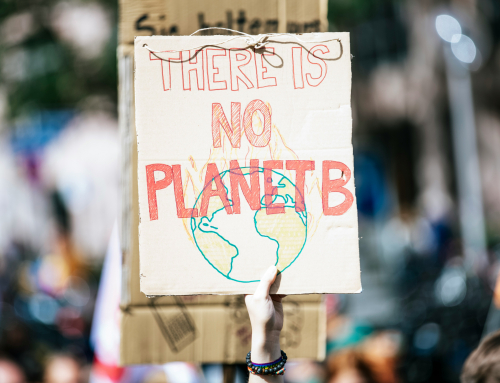By Andrea Rodriguez
Lecturer of Dental Public Health and Social Psychology, School of Dentistry, University of Dundee
REALITIES researcher
‘Are you the researcher, or are you a participant like me?’
I heard this question from a participant on the first day of the 6-week Flourish programme led by Ninewells Community Garden for the Dundee hub. The programme was co-designed with health and social care practitioners, and participants were referred from recovery services. On a beautiful and sunny day in June, I entered in the woods walking fast towards the garden, with my mind concentrated on my tasks for the day. While going through this beautiful path that led to the garden, I noticed that I gradually slowed down my pace; I started breathing more deeply; I started to listen the sounds of the birds, observing the colours of the threes, until…I was totally absorbed by this beautiful green, and peaceful landscape… I stopped and took photos.


Photos of the pathway to the garden
I am a social psychologist, and a former third sector professional. I do interdisciplinary research, and since 2024 I’ve been working in the REALITIES project. My job is done mostly outside the university through a co-learning process that happens in community settings (places that I love to be in!), that is in meaningful human interaction. Yes, everything is about people, trust, and relationships [1]. As a researcher I learnt the importance of working together creatively with the public, defining common principles and collaborative agendas for all involved, as well as supporting and learning from each other in this process that can create knowledge, and actions for social change.
Community engagement is a core element of community-based participatory research [2, 3]. It requires academic members to become part of the community and community members to become part of the research team, creating a unique working and learning environment underpinned by horizontal and respectful knowledge relations before, during, and after the research. This is a process that is flexible, fluid and dynamic. Like an expandable ball…we can see the big picture with all actors involved and their multiple connections and when we expand it, we see the spaces that are still there to be filled, the spaces for the unexpected.
I started to reflect on principles for community engagement and how to use participatory research methodologies into system-change efforts to impact on people’s health and well-being.
What are these principles? Leaving the comfort zone is certainly one of them. I am constantly reflecting and revisiting my “comfort zones” at work, in many aspects, from my worldviews to my attitudes and feelings when going into the community and doing research. I need to always be open to face new challenges and learnings that can improve and make a difference to my own and others’ practice. In my case, this means going out of the university, giving up of this sense of familiarity and control, as I understood very early that if I had expected people to share their stories, if and when they wished it, I needed to be open to exposing myself as well. Again, everything is about relationships…

This little picture is in my office’s wall at university as a reminder for my practice
Another important belief is that we are always in construction, we are always learning something with and from each other. No matter the years of experience, engaging with different people is not always easy nor does it always come naturally. It is a constant learning process, and you may feel different emotions during this journey. I still feel nervous (and excited!) each time I go for a new activity with new groups, or find myself in new contexts, because each interaction is unique. You never know what will happen, there is no recipe to follow. You need to keep being open and honest to invent and re-invent yourself and your strategies, in this process of learning from your partners, and learning from your mistakes too.
The research work can be a beautiful avenue to provoke critical consciousness as Paulo Freire’s development of critical pedagogy [4]. This endorses the ability of groups, perceived as ‘vulnerable’, to critically think about their realities and to question systems of power that maintain scenarios of inequities. On the other side there are creative strategies being (re) invented/ (re) imagined by different actors across the sectors. REALITIES is one example of the production of knowledge with action.
I believe this is the best way to co-create knowledge that should be collective, diverse and inclusive. Collective because we are working for and with people, diverse because we need to incorporate different perspectives, systems and knowledge, and inclusive because the way we are going to involve people should be based on their own terms.
References:
[1] Rodriguez, A. (ed.), Murray, C. (ed.), Laird, C., Biazus-Dalcin, C., Fancourt, M., Polson, S., Cairns, D., Mc Goldrick, N., Kidd, E., Galella, S., Hanlon, L. & Mackay, M (2022). Oral Health and Public Engagement, 2022, University of Dundee: UniVerse. 12 p. https://discovery.dundee.ac.uk/en/publications/oral-health-and-public-engagement
[2] Syed M. Ahmed and Ann-Gel S. Palermo (2010). Community Engagement in Research: Frameworks for Education and Peer Review. American Journal of Public Health, Volume 100, Issue 8Aug 2010,1380-1387. https://doi.org/10.2105/AJPH.2009.178137
[3] Wallerstein, N; Duran, B; Oetzel, J; Minkler, M (2018). Community-based Participatory Research for Health. 3rd edition, Jossey-Bass, USA.
[4] Freire, P (1974). Education for Critical Consciousness; Bloomsbury Revelation Series: London, UK.




